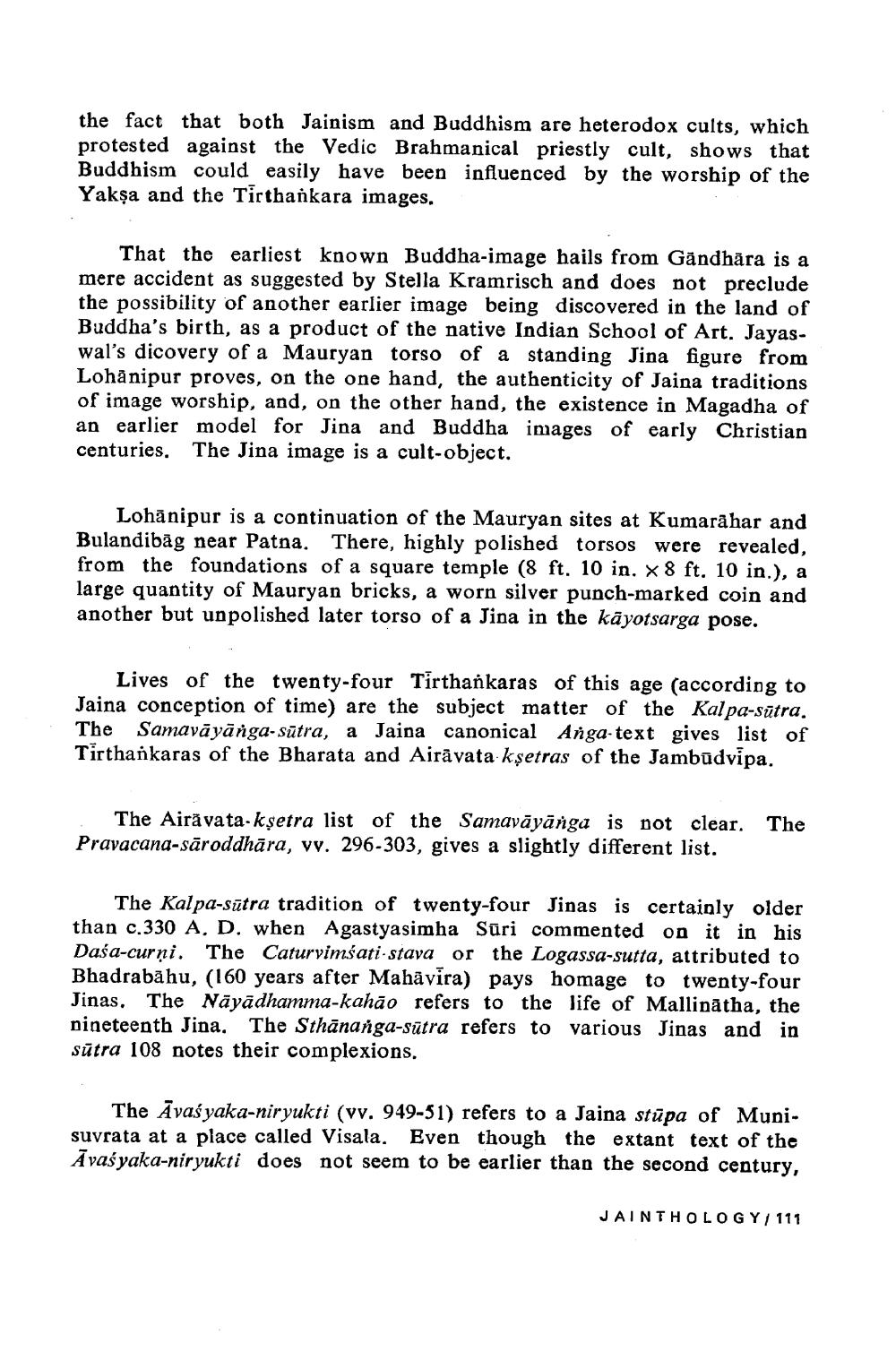________________
the fact that both Jainism and Buddhism are heterodox cults, which protested against the Vedic Brahmanical priestly cult, shows that Buddhism could easily have been influenced by the worship of the Yakşa and the Tirthankara images.
That the earliest known Buddha-image hails from Gandhāra is a mere accident as suggested by Stella Kramrisch and does not preclude the possibility of another earlier image being discovered in the land of Buddha's birth, as a product of the native Indian School of Art. Jayaswal's dicovery of a Mauryan torso of a standing Jina figure from Lohanipur proves, on the one hand, the authenticity of Jaina traditions of image worship, and, on the other hand, the existence in Magadha of an earlier model for Jina and Buddha images of early Christian centuries. The Jina image is a cult-object.
Lohānipur is a continuation of the Mauryan sites at Kumaràhar and Bulandibag near Patna. There, highly polished torsos were revealed, from the foundations of a square temple (8 ft. 10 in. X8 ft. 10 in.), a large quantity of Mauryan bricks, a worn silver punch-marked coin and another but unpolished later torso of a Jina in the kāyotsarga pose.
Lives of the twenty-four Tirthankaras of this age (according to Jaina conception of time) are the subject matter of the Kalpa-Sūtra. The Samavāyānga-sūtra, a Jaina canonical Anga-text gives list of Tirthankaras of the Bharata and Airāvata kşetras of the Jambūdvipa.
The
The Airävata-ksetra list of the Samavāyānga is not clear. Pravacana-sāroddhāra, vy. 296-303, gives a slightly different list.
The Kalpa-Sūtra tradition of twenty-four Jinas is certainly older than c.330 A, D. when Agastyasimha Sūri commented on it in his Dasa-curni. The Caturvimšati stava or the Logassa-sutta, attributed to Bhadrabāhu, (160 years after Mahāvira) pays homage to twenty-four Jinas, The Nāyādhamma-kahão refers to the life of Mallinátha, the nineteenth Jina, The Sthānanga-sūtra refers to various Jinas and in sūtra 108 notes their complexions.
The Āvas yaka-niryukti (vv. 949-51) refers to a Jaina stūpa of Munisuvrata at a place called Visala. Even though the extant text of the Āvaš yaka-niryukti does not seem to be earlier than the second century,
JAINTHOLOGY/ 111




